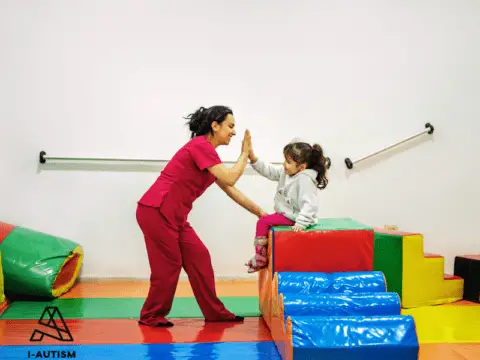Children with autism spectrum disorder (ASD) often have sensory sensitivities that make normal environments challenging for them. According to research, up to 90% of individuals with ASD have some form of sensory processing dysfunction. This means they may be over or under-responsive to stimuli like sounds, lights, textures, and more. For example, the loud sounds and dark environment of a typical movie theater can provoke anxiety or sensory overload in children with ASD.
Given these sensitivities, many parents of autistic children avoid bringing them to movies altogether. However, with some accommodations and preparation, movies can be an enjoyable experience for children with sensory issues. Sensory friendly showings aim to provide these accommodations so families don’t have to miss out.
What are Sensory Friendly Showings?
Sensory friendly showings are movie screenings designed specifically for individuals with autism spectrum disorder (ASD) or other sensory sensitivities. They aim to provide a more comfortable environment for those who may be overwhelmed by loud sounds, darkness, or being in crowded spaces 1.
Some key accommodations at sensory friendly showings include:2
- Lights are kept partially on
- Sound is lowered
- No previews or advertisements before the movie
- Audience members are free to get up, dance, walk, shout, etc.
These modifications allow children and families to enjoy the movies in a more relaxed environment without worrying they will disturb other patrons if overwhelmed by sensory input.
Major Movie Chains Offering Sensory Showings
Several major movie theater chains across the United States offer special sensory friendly showings to create a more accessible moviegoing experience for individuals with sensory sensitivities. The major chains providing these showings include:
AMC Theatres
AMC offers sensory friendly showings through their Sensory Friendly Films program in partnership with the Autism Society. These showings have adjustments like reduced sound, increased lighting, and no previews before the movie.
Regal Cinemas
Regal’s My Way Matinee program provides sensory friendly versions of new movies with similar accommodations to AMC.
Cinemark Theatres
Cinemark also partners with the Autism Society to offer monthly sensory friendly showings at many of their theaters across the country.
Other smaller chains like Malco Theatres also facilitate sensory friendly programming in select locations. Contact your local movie theater to find out if they offer special showings for those with sensory needs.
Finding Sensory Friendly Showtimes
The best way to find sensory friendly showtimes in your area is to check the websites of major movie theater chains. AMC, Regal, and Cinemark all have online resources to help you locate sensory friendly screenings.
On these websites, you can search for showtimes by entering your zip code. This will pull up listings for sensory friendly films playing at nearby theaters that month. These showings usually happen just once a month.
For example, you can visit the AMC website at https://www.amctheatres.com/programs/sensory-friendly-films and search “sensory friendly” and your zip code to see when and where local screenings are happening.
Regal Cinemas also has a My Way Matinee program that offers monthly sensory friendly showings.
Checking these resources online and searching by your location is the best way to find sensory friendly screening times convenient for your family.
Sensory Friendly Movies | Tips
Arriving Early
It’s recommended to arrive at the movie theater early for a sensory friendly showing to get settled and allow your child to get comfortable. Arriving 30-45 minutes before showtime can help ensure you get seats near the front, which is ideal for children with sensory issues.
“Arriving early allows kids to get their bearings and check out the theater space before it gets crowded,” advises Understood.org (https://www.understood.org/en/articles/7-tips-for-taking-kids-with-sensory-processing-issues-to-the-movies). “This helps them know what to expect during the movie.”
Letting your child explore the theater first can help them feel more at ease. Allow them to find the seats, get comfortable, and check out the space. Doing this before the movie starts and the lights go down can make the transition easier.
Arriving early also allows time to get familiar with the location of exits, bathrooms, and theater staff who can help if any issues arise.
Bringing Sensory Tools
Bringing items that provide sensory input can help your child feel more settled and focused during the movie. Consider packing any tools that your child finds calming or regulating. Popular options include:
- Noise-cancelling headphones or earplugs to minimize loud sounds
- Fidget toys like fidget spinners or stress balls to keep hands busy
- Weighted blankets or vests to provide comforting deep pressure
It’s a good idea to make a “sensory bag” with a few preferred items your child can pull out as needed. Allow them to choose which sensory supports they want to bring along. Having portable tools available can prevent sensory overload or tantrums during overwhelming moments.
Some other tools like therapeutic chew necklaces or tactile toys may also help kids cope with sensory stimulation. Experiment to find what’s most effective for your child’s needs. Just be sure to keep all objects safe and contained so they aren’t easily lost in the dark theater.
If your child does not want to wear the headphones or engage with the tools you brought, don’t force them. The items are there if needed, but should not be pushed if your child is content without them.
With the right sensory tools on hand, your child can successfully tune out overstimulation and engage with the movie.
Consider a Trial Run
Taking your child to a sensory friendly showing for their very first movie theater experience may be overwhelming, even with accommodations in place. Instead, consider making your first visit to the theater a trial run without seeing a movie. You can get tickets to a sensory friendly showing and arrive when the theater opens to let your child get used to the environment. According to the Sensory-Friendly Theater page from Mount Wachusett Community College, visiting the theater first helps get your child accustomed to sights and sounds like the lighting, previews, crowds and overall stimulation. This way, they are more prepared for the actual movie experience later.
Call the theater ahead of time to inform them you are doing a trial run and will not stay for the movie screening. That way the staff understands if you end up leaving after a short period of time. Take your child on a tour and point out where you will sit and watch the movie on your next visit. Let them explore the theater space at their own pace. Ultimately, this trial run eases anxiety and sets you both up for a successful movie trip in the future.
Taking Breaks
Sensory overload can happen even in a sensory friendly environment. It’s important to let your child step out of the theater if they need a break. Go to the lobby or a quiet area to give them a chance to decompress. Do some deep breathing, listen to calming music, or let them stim with a fidget toy. Return to the theater when your child feels ready to go back. Don’t force them to stay if they are truly overwhelmed. You can always catch another sensory friendly showing next month.
As an example, according to autism.org, “Taking breaks helps prevent meltdowns in public places like movie theaters.”
Staying Through Difficult Moments
If your child has a stressful moment and becomes disruptive, try to stay even if you feel like having to leave. As difficult as it may be, sticking it out for the full experience can have benefits for children with ASD and sensory issues.
According to the Autism Society UK, it’s important not to immediately end an activity when a child is overwhelmed. If able to calm down and continue, this helps build their tolerance. Leaving may reinforce the meltdown behavior.
The Raising Children network also recommends staying calm and breathing with your child during a meltdown. If you can ride it out, they gain confidence in managing emotions and new environments.
Finally, according to Autism Parenting Magazine, trying to stay through the full movie can be a chance for your child to practice coping skills and resilience. Completing the experience may make the next outing easier.
In summary, sensory friendly showings provide critical accommodations to make the moviegoing experience more enjoyable and accessible for children with sensory sensitivities and autism. Major movie theater chains offer these specialized screenings once a month, providing parents the opportunity to check out new sensory friendly offerings in their area. Arriving early, bringing sensory tools, and extending patience if children need breaks can lead to a successful sensory friendly showing. We encourage all parents to give these showings a try – it can open up the world of movies for children who otherwise struggle with the traditional theater environment. With some planning and flexibility, an amazing movie memory can be made.









